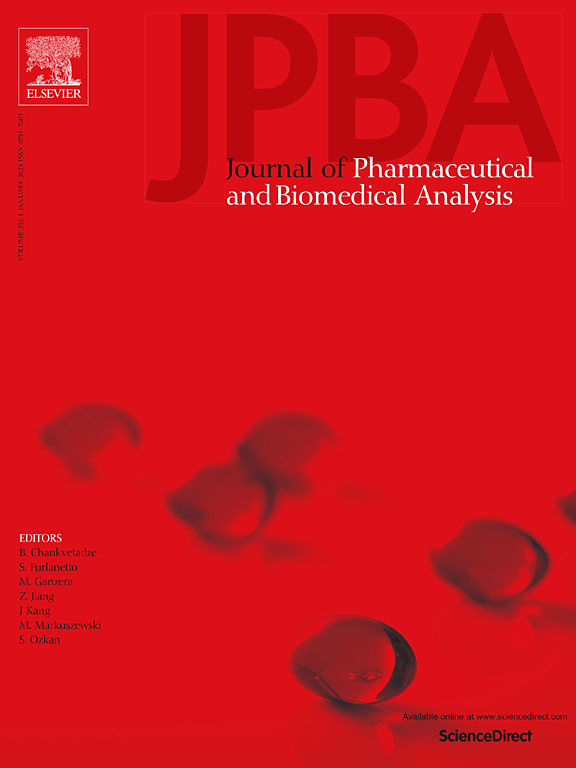Gastrointestinal motility modulation efficacy-related chemical marker findings and QAMS-based quality control of Agastache rugosa
IF 3.1
3区 医学
Q2 CHEMISTRY, ANALYTICAL
Journal of pharmaceutical and biomedical analysis
Pub Date : 2025-01-18
DOI:10.1016/j.jpba.2025.116680
引用次数: 0
Abstract
Agastache rugosa (AR), a traditional edible and medicinal herb, is often used for treating gastrointestinal (GI) motility disorder. But little effort has been done on its gastrointestinal motility modulation (GMM) efficacy-related components and quality control of AR. In this study, a novel strategy was proposed to find GMM efficacy-related chemical markers for the quality control of AR. Firstly, network pharmacology and serum pharmacochemistry were applied to predict potential GMM efficacy-related marker components. Secondly, the GMM efficacy-related marker components were verified through literature matching, target isolation/identification and activity evaluation. Lastly, a quantitative analysis of multiple components by a single marker (QAMS)-based method for simultaneous quantification of marker components was established and validated by HPLC–DAD. The results showed that nine components in AR were screened as potential GMM related components, five of which (rosmarinic acid, tilianin, apigenin, acacetin, and cirsimaritin) were matched by literatures, and four (acacetin-7-O-(6''-O-malonyl)-β-D-glucopyranoside, agastachoside, acacetin-7-O-(2''-O-acetyl-6''-O-malonyl)-β-D-glucopyranoside, and isoagastachoside) were chemically identified and newly evaluated on zebrafish model. The nine components were used as marker compounds to develop an effective QAMS-based method for the quantitative evaluation of 26 batches of commercial AR samples.
求助全文
约1分钟内获得全文
求助全文
来源期刊
CiteScore
6.70
自引率
5.90%
发文量
588
审稿时长
37 days
期刊介绍:
This journal is an international medium directed towards the needs of academic, clinical, government and industrial analysis by publishing original research reports and critical reviews on pharmaceutical and biomedical analysis. It covers the interdisciplinary aspects of analysis in the pharmaceutical, biomedical and clinical sciences, including developments in analytical methodology, instrumentation, computation and interpretation. Submissions on novel applications focusing on drug purity and stability studies, pharmacokinetics, therapeutic monitoring, metabolic profiling; drug-related aspects of analytical biochemistry and forensic toxicology; quality assurance in the pharmaceutical industry are also welcome.
Studies from areas of well established and poorly selective methods, such as UV-VIS spectrophotometry (including derivative and multi-wavelength measurements), basic electroanalytical (potentiometric, polarographic and voltammetric) methods, fluorimetry, flow-injection analysis, etc. are accepted for publication in exceptional cases only, if a unique and substantial advantage over presently known systems is demonstrated. The same applies to the assay of simple drug formulations by any kind of methods and the determination of drugs in biological samples based merely on spiked samples. Drug purity/stability studies should contain information on the structure elucidation of the impurities/degradants.

 求助内容:
求助内容: 应助结果提醒方式:
应助结果提醒方式:


